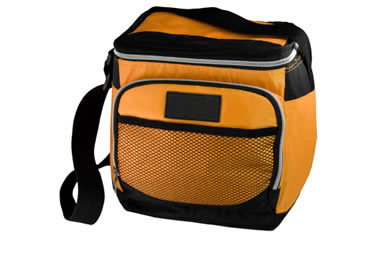|
Trying on clothes can be a chore. You carve out time to go to the store, find three sizes of every dress/pants/shirt you think you might be flattering, locate the dressing room, pry a toddler off your legs and proceed to try on one thing after another, examining yourself from every angle, only to decide that every single thing looks awful and why did you even bother doing this in the first place? You hurriedly hang up your items before handing them to the room attendant or dumping them onto the overflowing "Land of Misfit Clothes" shelf, leaving with nothing but the clothes you were wearing, your purse and the little bit of self-esteem that you have left. In an ideal world, dressing rooms would be more inviting or at least well-lit and free of stray straight pins. You'd also be able to bring along a friend who could tell it to you straight. But, friends aren't always readily available when you need them, and toddlers--well, you can't really trust their opinion at all. Without the buddy system or ideal accommodations, how can you know what the real you actually looks like. How can you be confident with your clothing choices if you can't trust what you see in front of you? 1. Ignore the sizing. "Vanity sizing," or increasing the sizing on clothing to make shoppers feel as though they fit into a smaller size than they actually do, started in the 1930s when the government tried to find out if women's measurements and proportions could fit into a standard measurement of sizing. In 1958, after failing at this experiment due to finding too many variables in women's figures, the government went ahead and made a standardized sizing chart anyway—the one we still use today. Since then, clothing manufacturers have taken the standard sizes from eight as the smallest size offered to sizes as small as 000 by J. Crew, figuring that if a woman who knew she wore a size eight could fit into a six just by changing the number, then they'd be more likely to make a sale. That same size eight in 1958 measurements would be a size 00 as of 2011. Which is to say that, well, size really doesn't matter. What's a girl to do when she knows she knows she's a 12 at one store, but the only thing she can fit into is a 14 at another store? Buy the darn pants. It's difficult to get past the number, but, much like numbers on a scale, they don't tell the whole story. Grab a few different sizes of a style you like, try them on and concentrate on how they feel, not the number on the tag (which no one ever has to see) or how they look in the mirror. "Manufacturers are making clothing appear smaller and this creates issues for many people. Ignore the sizing and just look at the actual clothing to try to ballpark which will fit you. It's [the same as] weighing yourself on a scale—it's just a number!" says nutrition consultant Stacy Goldberg, MPH, RN, BSN. 2. Understand the mirror can lie. Many stores tamper with the lighting and mirror angles in their retail space and the dressing rooms. Some stores add a rosy tint to their dressing room mirrors so we all look happy and sun-kissed; whereas mirrors on the retail floor are not tinted. Other mirrors may have too-bright lighting, which makes you look pale and the clothes unflattering. If the lights are too dim, on the other hand, you may not notice that that blouse is see-through until you get it home. Other store dressing rooms have mirrors installed at a tilt to make you look slimmer—awesome, right? Sure, until you get home and realize that dress doesn't look nearly as good as you thought. To get an accurate assessment, check to see if your dressing room mirror is flat against the wall. Some stores go as far as to add a thick frame to a tilted mirror so you can't tell it's tilted at all. If you're unsure whether or not the mirror is messing with you, step out of the dressing room and look at another mirror or ask a salesperson for a different perspective. Another good idea is to look at yourself in your regular clothing before you try on other items. What does the lighting look like? Is it unflattering, or seem a bit off? If you take stock in the lighting before hand, you'll be able to compare when trying on other clothing. Take advantage of any other nearby mirrors—some dressing rooms have a larger, shared space with brighter lighting or multiple mirrors that can allow you to see yourself from different angles. 3. Go in with the the right mindset—and undergarments. If you know you have an important event coming up in a couple months, allow adequate time to find the perfect dress. Don't put it off until the last minute because you hate the act of shopping or trying on clothes. You want to find the outfit that's perfect for you, even if that means several trips to the store to try on clothes and time to allow for returns. "Go shopping when you feel confident and good about yourself. You also may want to avoid trying on clothing when you have your period or if you've just eaten a large meal. Both can make you feel heavier than you are which can negatively impact your body image," psychologist, nutritionist and certified wellcoach®, Dr. Ellen Albertson, says. Make sure you head into that dressing room wearing the right bra and underwear, too. A sports bra, for example, will not allow you to see that the neckline on the top you bought plunges too far down, and wearing boy shorts will not help you get an adequate assessment of those bathing suit bottoms. 4. Skip the dressing room all together. Sure, it's a huge hassle to go to the store, buy a bunch of clothes, take them home to try on, then have to return the ones that don't fit—but it might be worth it in the end. If you detest the thought of all those trips to the store, consider experimenting with some try-before-you-buy clothing sites, like Bungalow Clothing or Stitch Fix. These services work by first having you create a style profile, which is then used by a stylist to pull together items he or she thinks you might like based on your personal preferences. Clothes are shipped right to your door, allowing you to try them and flaunt them right from the comfort of your bedroom. After taking a few mirror selfies and deciding what items you want to keep, put what you don't want back in the box, attach the pre-paid shipping label and send it back to the company. Regardless of how you decide to go shopping and where you try on clothes, remember to relax and have fun. "Ask a friend to go with you, just don't engage in ‘fat talk.' You may want to let them help you decide what to buy without looking in the mirror. Then, take the clothing home and try it on again in your own environment. You can always take things back," Albertson says. What other tips do you have for trying on clothes? |
Popular Entries
More From SparkPeople
|







.png)













